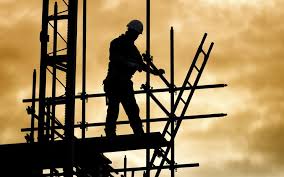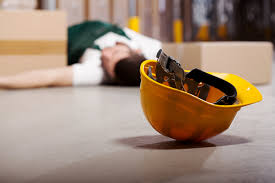Two workers were killed Monday when they fell down an elevator shaft at a construction site in downtown St. Louis. This tragic workplace accident illustrates the ever-present dangers of working on a construction site.
Falls are among the most common causes of serious work related injuries and deaths. Employers must set up the work place to prevent employees from falling off overhead platforms, elevated work stations or into holes in the floor and walls. The following is a high-level overview of the importance of fall protection in the workplace, as outlined by the U.S. Department of Labor’s Occupational Safety and Health Administration.
What can be done to reduce falls?
OSHA requires that fall protection be provided at elevations of four feet in general industry workplaces, five feet in shipyards, six feet in the construction industry and eight feet in longshoring operations. In addition, OSHA requires that fall protection be provided when working over dangerous equipment and machinery, regardless of the fall distance.
To prevent employees from being injured from falls, employers must:
- Guard every floor hole into which a worker can accidentally walk (using a railing and toe-board or a floor hole cover).
- Provide a guard rail and toe-board around every elevated open sided platform, floor or runway.
- Regardless of height, if a worker can fall into or onto dangerous machines or equipment (such as a vat of acid or a conveyor belt) employers must provide guardrails and toe-boards to prevent workers from falling and getting injured.
- Other means of fall protection that may be required on certain jobs include safety harness and line, safety nets, stair railings and hand rails.
OSHA requires employers to:
- Provide working conditions that are free of known dangers.
- Keep floors in work areas in a clean and, so far as possible, a dry condition.
- Select and provide required personal protective equipment at no cost to workers.
- Train workers about job hazards in a language that they can understand.
For more information on OSHA fall protection standards and resources for construction and non-construction job sites click here.
How do I find out about employer responsibilities and workers’ rights?
Workers have a right to a safe workplace. The law requires employers to provide their employees with safe and healthful workplaces. The OSHA law also prohibits employers from retaliating against employees for exercising their rights under the law (including the right to raise a health and safety concern or report an injury). For more information see www.whistleblowers.gov or Workers’ rights under the OSH Act.
If you think your job is unsafe or if you have questions, contact OSHA at (800)321-OSHA (6742). To reach your regional OSHA office, go to the OSHA Offices by State.
Casey & Devoti is a St. Louis-based personal injury law firm. Together Partners Matt Casey and Matt Devoti have nearly 40 years of trial experience. They handle a variety of personal injury matters, including: car, truck and train accidents, victims of impaired and distracted driving, medical malpractice and birth injuries, product liability, slips/trips/falls, elder care and sexual abuse, Workers’ Compensation, and wrongful death. Matt and Matt proudly serve clients throughout metropolitan St. Louis, southeastern Missouri and southern Illinois. If you or a loved one have been injured by the negligence of another, call the office today for a free, no-obligation consultation: (314) 421-0763.








